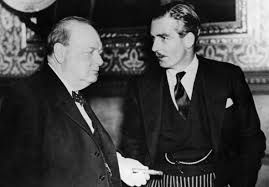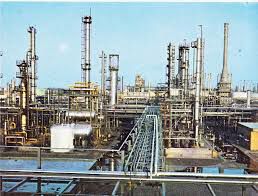1948: THE BRITISH LABOUR GOVERNMENT AND THE COMING OF THE ANGLO-IRANIAN OIL COMPANY’S CRISIS
It embodied a new formula for royalties which henceforward could be calculated under three headings:
(i) A fixed sum per ton of oil exported or sold in Persia. This was to be 4s per ton subject to adjustment to compensate the Government for any fluctuations in the value of English currency as compared with the value of gold in London, taking the 1933 price as par.
(ii) A sum varying between 6d and 1s per ton similarly adjusted in gold in consideration of exemption from Iranian taxation on the Company’s operations.
(iii) A sum equal to 20% of any distribution of the ordinary stock holders or the Company, whether as dividends or in relation to general reserves, in excess of a certain minimum annual sum (£671,280).3
In addition the Persian Government would be entitled to a sum equal to 20% of the difference between the Company’s General Reserve at the end of the Concession and the General Reserve at 31st December, 1932. (N.B. These payments were not given a gold guarantee.)4
The 1933 Concession lasted for eighteen years (as against its theoretical life of 60 years to 1993). With the Depression easing, oil production in Iran followed an upward course. From 5.75 million tons in 1931 it rose to nearly 10.2 million tons in 1938, outstripping the rate of increase in oil production in the rest of the world. Refinery throughput increased roportionately. This increase of oil production in Iran brought nearly £4.3 million income for Iran by 1939, from just over £1.5 million in 1932. The increased revenue provided the Shah the bulk of the finance that he needed for his programme to modernise Iran.
All this changed with the outbreak of the Second World War, which had at first a very different effect from its predecessor. Instead of production being stimulated, it had to be cut back, since the British Government, because of the German U-boat campaign, decided to concentrate its scarce shipping resources in the Atlantic, drawing oil products from the USA and Caribbean instead of from more distant Iran. This reduced the Shah’s royalties with the result that in July 1940 he threatened to cancel the 1933 Concession, but he was persuaded to acquiesce in a fixed royalty of £4 million p.a. until oil exports revived. The Shah reluctantly accepted AIOC’s5 £4 million p.a. royalty, as it was a great deal less than the £14 million p.a. he had demanded.
The British Government was unhappy about the political situation in Iran. The Germans had considerable influence in the country. When Hitler invaded Russia in 1941, Churchill of all people was not likely to overlook the importance of safeguarding Iranian oil from the chronically oil-short Nazis. He joined with Stalin with the ultimate intention of forcing all Germans from Iran. On 25th August 1941, British forces occupied south Iran and Soviet forces moved into north Iran. On 27th September 1941 Reza Shah abdicated in favour of Muhammad Reza, his 22 year-old eldest son.
Meanwhile, AIOC’s role in the war effort grew in importance. Not only was Iran now a crucial route for supplies to the Soviet Union, but after Japan attacked the USA on 7th December 1941, and went on to overrun most of south-east Asia, Abadan became the major source of petroleum products to sustain the Allied war effort in India and the Pacific. AIOC’s labour force in Khuzistan more than doubled, from 32,000 to 68,000, with the Company (helped by the Middle East Supply Centre in Cairo), having to meet their needs for housing, food and all requirements.
- Ibid., pp. 2-3.
- Ibid.
- By the order of the Shah in 1935, Persia became known as Iran. The Anglo-Persian Oil Company (APOC) became the Anglo-Iranian Oil Company. (AIOC).



